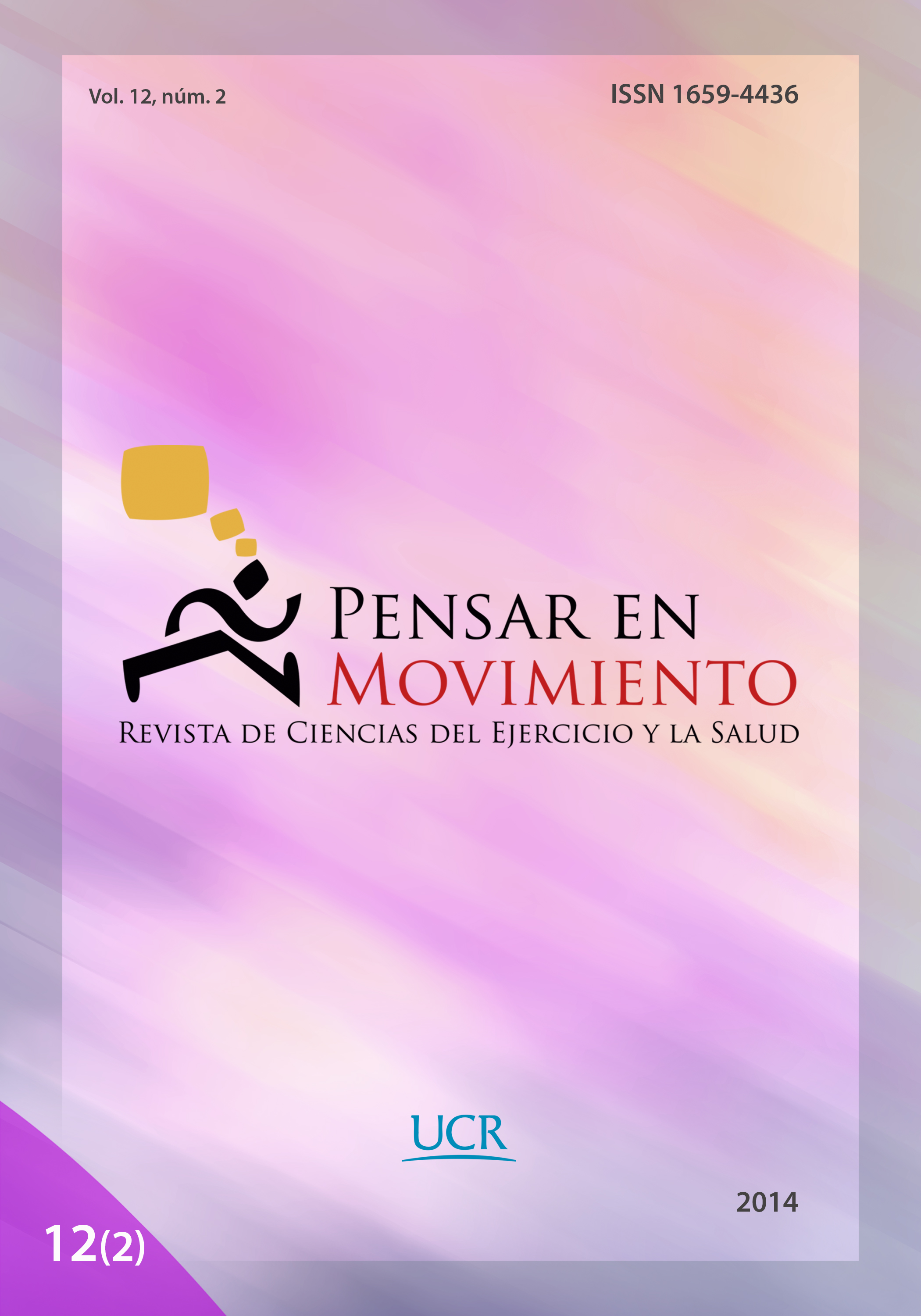Abstract
During physical activity, increased body temperature activates the mechanism of sweating. Sweat evaporation avoids excessive increases of body temperature, but this occurs at the expense of dehydration. Dehydration in turn may be increased by many factors, including the clothing used by the exercising person. In this report it is experimentally demonstrated that the use of an additional shirt while playing soccer induces statistically significant increases in the exercise-induced percentage of body dehydration. Taking into account that dehydration has the potential to adversely affect certain physical and cognitive abilities in an acute manner, using an additional shirt when playing soccer is not desirable from a purely thermoregulatory standpoint.
References
Bowtell, J. L., Avenell, G., Hunter, S. P., & Mileva, K. N. (2013). Effect of hypohydration on peripheral and corticospinal excitability and voluntary activation. PLoS One, 8(10), e77004. Recuperado de: http://www.plosone.org/article/info%3Adoi%2F10.1371%2Fjournal.pone.0077004 doi: 10.1371/journal.pone.0077004
Kenefick, R. W., & Cheuvront, S. N. (November, 2012). Hydration for recreational sport and physical activity. Nutrition Reviews, 70 Suppl 2, S137-142. Recuperado de: http://onlinelibrary.wiley.com/doi/10.1111/j.1753-4887.2012.00523.x/abstract doi: 10.1111/j.1753-4887.2012.00523.x
López Dávila, A. (2014) Actualidad en termorregulación. Pensar en Movimiento Manuscrito aceptado para publicación.
Masento, N. A., Golightly, M., Field, D. T., Butler, L. T., & van Reekum, C. M. (2014). Effects of hydration status on cognitive performance and mood. British Journal of Nutrition, 111(10), 1841-1852. Recuperado de: http://journals.cambridge.org/action/displayAbstract?fromPage=online&aid=9236055&fileId=S0007114513004455 doi: 10.1017/S0007114513004455
McCullough, E. A., & Kenney, W. L. (2003). Thermal insulation and evaporative resistance of football uniforms. Medicine & Science in Sports & Exercise, 35(5), 832-837. Recuperado de: http://journals.lww.com/acsm-msse/Fulltext/2003/05000/Thermal_Insulation_and_Evaporative_Resistance_of.17.aspx doi: 10.1249/01.MSS.0000064998.48130.22
Sawka, M. N., Burke, L. M., Eichner, E. R., Maughan, R. J., Montain, S. J., Stachenfeld, N. S., & Medicine, A. C. o. S. (2007). American College of Sports Medicine position stand. Exercise and fluid replacement. Medicine & Science in Sports & Exercise, 39(2), 377-390. Recuperado de: http://journals.lww.com/acsm-msse/Fulltext/2007/02000/Exercise_and_Fluid_Replacement.22.aspx doi: 10.1249/mss.0b013e31802ca597
Sawka, M. N., Cheuvront, S. N., & Kenefick, R. W. (2012). High skin temperature and hypohydration impair aerobic performance. Experimental Physiology, 97(3), 327-332. Recuperado de: http://ep.physoc.org/content/early/2011/11/28/expphysiol.2011.061002 doi: 10.1113/expphysiol.2011.061002






